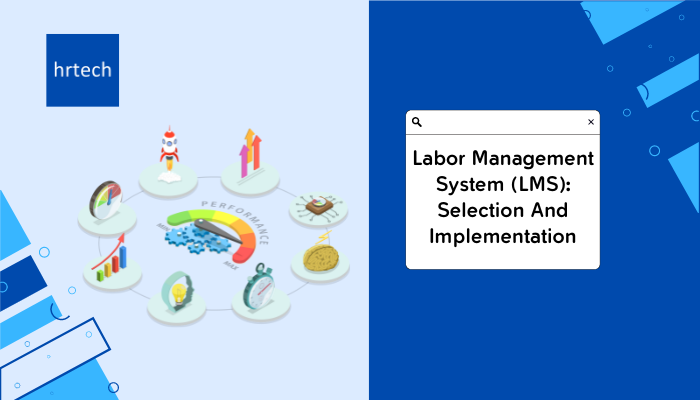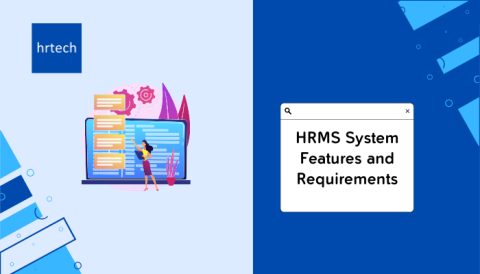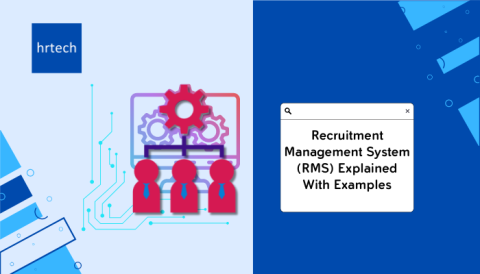How would it be if you could manage your workforce with just a few clicks? No more spreadsheets or manual scheduling. Just higher productivity!
That’s how the Labor Management System (LMS) can help you to effectively manage your workforce. But with so many options out there, how do you choose the right one? And once you’ve made your choice, what does the implementation process look like?
Read on till the end to find out!
What Is A Labor Management System (LMS)?
A Labor Management System (LMS) is a tool that helps businesses manage their workforce effectively. It’s a software solution designed to simplify and enhance various aspects of labor management, such as scheduling, time tracking, and performance monitoring.
An LMS can be great for companies that are looking to increase productivity, reduce costs, and improve overall operational efficiency. It automates many manual processes which frees up time for managers and HR teams to focus on more strategic tasks.
One of the key benefits of an LMS is its ability to provide real-time insights into labor metrics.
With an LMS in place, businesses can easily track things like overtime hours, absenteeism rates, and labor costs. This data can then be used to make informed decisions about staffing levels, scheduling, and other crucial workforce management issues.
How Does A Labor Management System Work?
A Labor Management System (LMS) is all about collecting and analyzing data related to your workforce. Here’s how it typically works:
1. Data Collection:
Employees use various tools (like time clocks, mobile apps) to record their work hours, breaks, and other relevant information. The LMS captures this data in real-time.
2. Data Processing:
The LMS then processes and organizes the collected data into useful formats, such as timesheets, attendance records, and performance metrics.
3. Data Analysis:
Operation Managers and HR team members can access the processed data through the LMS dashboard. They can view trends, identify issues, and generate reports that help in further decision-making.
4. Workforce Enhancement:
Based on the insights gained from the data analysis, businesses can take steps to enhance their workforce. This might involve adjusting schedules, reallocating resources, or implementing training programs to address performance gaps.
5. Continuous Improvement:
As the LMS continues to collect and analyze data over time, businesses can spot long-term trends and make strategic changes to continuously improve their labor management practices.
Key Features Of Labor Management System
Let’s take a closer look at some of the key features that make an LMS so powerful:
1. Real-Time Data Collection:
One of the most important features of an LMS is its ability to collect labor data in real-time. This means that as soon as an employee clocks in or out, takes a break, or completes a task, that information is immediately captured by the system.
With real-time data at your fingertips, you can make informed decisions on the fly.
2. Scheduling Tools:
Creating employee schedules can be a time-consuming and complex task, especially for larger organizations. An LMS simplifies the process with powerful scheduling tools. You can quickly build schedules based on employee availability, skill sets, and business needs.
Some systems even offer auto-scheduling features that use algorithms to optimize shifts for maximum efficiency.
3. Time And Attendance Tracking:
Accurately tracking employee work hours is essential for payroll and compliance purposes. An LMS automates this process with features like digital time clocks, mobile clock-in/out, and automatic break deductions.
You can also set up alerts for things like overtime, missed punches, and schedule deviations.
4. Performance Metrics:
Measuring employee performance is key to driving continuous improvement. An LMS provides a range of performance metrics, such as productivity rates, idle time, and task completion.
You can use this data to identify top performers, coach struggling employees, and make data-driven decisions about staffing and training.
5. Reporting and Analytics:
An LMS generates detailed reports on various aspects of your workforce, such as labor costs, attendance patterns, and scheduling effectiveness.
These reports give you valuable insights into your operations and help you spot trends over time. Many systems also offer customizable dashboards that allow you to visualize key metrics at a glance.
6. Mobile Accessibility:
A good LMS offers mobile apps that allow users to view schedules, request time off, swap shifts, and communicate with their team from anywhere. This flexibility is especially important for businesses with remote or field-based workers.
7. Integration With Other Systems:
An LMS is most effective when it integrates seamlessly with your other business systems, such as HR software, payroll, and ERP. This integration allows data to flow freely between systems, reducing manual data entry and ensuring consistency across your organization.
Benefits Of Labor Management System
Here are some of the top benefits you can expect by implementing a labor manager system:
Increased Productivity:
As LMS provides real-time visibility into workforce metrics, managers can identify productivity gaps.
For example, if the system shows that a particular process is taking longer than expected, you can investigate the issue and implement training or process improvements to improve efficiency.
Reduced Labor Costs:
Labor is often one of the biggest expenses for businesses, so even small improvements in efficiency can have a big impact on the bottom line.
An LMS helps reduce labor costs in several ways:
- Preventing overtime by ensuring proper scheduling.
- Reducing time theft by enforcing clock-in/out policies.
- Identifying opportunities to enhance staffing levels.
Improved Compliance:
Keeping up with labor laws and regulations can be a challenge, but an LMS helps ensure compliance by automating many of the required processes.
For instance, the system can automatically track breaks and meals to ensure compliance with rest period laws. It can also generate audit trails and reports that are important for ensuring compliance with regulations.
Better Employee Engagement:
When employees feel that their time is being managed fairly and efficiently, they’re more likely to be engaged and motivated.
An LMS supports employee engagement by:
- Providing self-service tools for viewing schedules and requesting time off.
- Enabling fair and consistent application of attendance policies.
- Giving employees visibility into their performance metrics.
Data-Driven Decision Making:
One of the biggest advantages of an LMS is all the data it provides.
With detailed reports and analytics, you can make informed decisions about staffing, scheduling, and performance management.
For example, you might use scheduling data to identify peak periods and adjust staffing accordingly, or use productivity data for process improvement efforts.
Scalability:
As your business grows, managing a larger workforce becomes increasingly complex. An LMS is designed to scale with your organization, so you can continue to effectively manage labor as your headcount increases.
Cloud-based systems are especially scalable, as they can accommodate a virtually unlimited number of users and locations.
Top Labor Management System Examples
Here are three top LMS solutions that are effective for businesses of various sizes and industries:
1. TimeForge:
TimeForge is a comprehensive LMS that’s well-suited for businesses in the retail, hospitality, and restaurant sectors. It offers a range of features, including scheduling, time and attendance tracking, and performance management.
One standout feature of TimeForge is its sales forecasting tool, which uses historical data to predict future staffing needs. This can help managers create schedules that align with expected demand, reducing overstaffing and understaffing. TimeForge also offers a mobile app that allows employees to view schedules, request time off, and swap shifts from their smartphones.
2. iWAREHOUSE:
iWAREHOUSE is an LMS designed specifically for warehouse and distribution environments. It includes tools for managing labor at every stage of the warehouse process, from receiving and putaway to picking and shipping. iWAREHOUSE uses real-time data from your warehouse management system (WMS) to track productivity and identify areas for improvement.
It also offers a unique gamification feature that allows managers to create contests and leaderboards to motivate employees and drive performance.
3. Blue Yonder:
Blue Yonder is a powerful LMS that uses artificial intelligence (AI) to optimize workforce management. It’s a good choice for larger enterprises with complex labor needs, as it can handle scheduling and time tracking for thousands of employees across multiple locations.
Blue Yonder’s system analyzes data from various sources like point-of-sale systems, foot traffic counters to create demand forecasts and automatically generate schedules. The system also offers real-time monitoring of employee productivity, so managers can quickly identify and address any issues.
How To Select The Right LMS For A Company?
Here’s how to select the top LMS solution for your company:
Step-1. Define Your Needs:
Start by clearly defining what you want to achieve with an LMS.
- Do you need to improve scheduling efficiency?
- Reduce labor costs?
- Ensure compliance with labor laws?
Make a list of your top priorities and use them in your decision making process.
Step-2. Consider your industry:
Different industries have different labor management needs.
For example, a retail business might place a high priority on sales forecasting and scheduling flexibility, while a manufacturing plant might be more focused on tracking productivity and ensuring safety compliance.
Look for an LMS that has a proven track record in your industry.
Step-3. Evaluate features:
Once you have a shortlist of potential LMS solutions, take a close look at their features.
Some key features to consider include:
- Scheduling tools
- Time and attendance tracking
- Performance metrics and analytics
- Mobile accessibility
- Integration with other systems
- Compliance management
Step-4. Assess Scalability:
As your business grows, your labor management needs will evolve. Choose an LMS that can scale with your organization.
Consider factors like the number of employees the system can accommodate, the ability to add new locations, and the ease of adding new features or modules.
Step-5. Look For User-Friendliness:
An LMS is only effective if your managers and employees actually use it. During the selection process, evaluate each system’s user interface and overall ease of use.
Consider doing a trial run with a group of end-users to get their feedback.
Step-6. Check For Mobile Compatibility:
Make sure the LMS you choose offers mobile apps or a mobile-friendly interface that allows managers and employees to access the system from their smartphones or tablets.
Step-7. Consider Integration:
Your LMS should work seamlessly with your other business systems, such as HR software, payroll, and point-of-sale. Look for an LMS that offers pre-built integrations.
Step-8. Evaluate customer support:
Even the best LMS will have occasional hiccups. When issues arise, you want to know that you can count on quick and effective customer support
During the selection process, ask about support options and response times. You may also want to read online reviews or talk to current customers to get a sense of the vendor’s support quality.
Step-9. Compare Costs:
Of course, cost is always a factor in any business decision. When evaluating LMS pricing, consider both the upfront costs like the overall software cost, and implementation fees. Also, consider the ongoing costs like monthly subscription fees, support costs).
Look for any potential hidden costs, such as charges for adding new users or accessing certain features.
Step-10. Make your decision:
After carefully evaluating your options, it’s time to make a decision. Choose the LMS that best meets your needs, budget, and long-term business goals. Keep in mind that no system is perfect, so be prepared to make some compromises.
The most important thing is to choose an LMS that will support your workforce management goals and drive real business results.
How Much Does LMS Typically Cost?
LMS typically costs between $70K-$100K per year.
The cost of a Labor Management System can vary widely depending on factors like the size of your organization, the specific features you need, and the method you choose like cloud-based or traditional LMS.
For small businesses with fewer than 50 employees, you can expect to pay around $10K to $15K per year for a basic cloud-based LMS.
These systems typically include core features like time tracking, scheduling, and basic reporting. However, they may lack more advanced capabilities like performance management or AI-driven analytics and scheduling.
For large enterprises with more than 500 employees, LMS costs can range from $100K to $250K or more per year. Sometimes, the cost can even reach up to millions if it’s for a very large enterprise.
These high-end systems offer the most comprehensive feature sets, including advanced analytics, AI and machine learning capabilities, and customizable workflows. They also typically provide a higher level of support and more extensive implementation services. Some LMS providers charge per user per month, while others charge a flat monthly or annual fee.
Apart from the software cost, there can also be additional costs for things like setup and implementation, training, hosting fees, and customer support.
When evaluating LMS costs, it’s important to consider the long-term return on investment (ROI). While a higher-priced system may require a larger upfront investment, it can often pay for itself many times over in increased productivity, reduced labor costs, and improved compliance.
LMS Implementation Process
Implementing a Labor Management System is a multi-step process that requires careful planning and execution. Here’s what you can expect:
1. Planning And Preparation:
The first step is to define your goals for the LMS and develop a detailed implementation plan. This should include a timeline, a budget, and a clear assignment of roles and responsibilities.
You’ll also need to prepare your data for migration into the new system, which may involve cleaning up and consolidating data from various sources.
2. System Configuration:
Once you have a plan in place, the next step is to configure the LMS to meet your specific needs. This typically involves setting up things like user accounts, security permissions, and workflow rules.
You may also need to customize the system’s interfaces and reports to align with your business processes.
3. Integration:
Most LMS implementations involve integrating the system with other business applications, such as HR software, payroll systems, or time clocks. This integration allows data to flow seamlessly between systems, reducing manual data entry and ensuring consistency.
The complexity of the integration process can vary widely depending on the systems involved.
4. Testing:
Before rolling out the LMS to your entire organization, it’s crucial to thoroughly test the system to ensure that it’s working as expected. This may involve conducting user acceptance testing (UAT) with a small group of end-users to identify any issues or areas for improvement.
5. Training:
Once the system is configured and tested, you’ll need to train your managers and employees on how to use it effectively. Training could be in-person sessions, webinars, or self-paced online courses. It’s important to provide ongoing training and support to ensure that users are comfortable with the system and using it correctly.
6. Go-Live:
After training is complete, you’re ready to go live with the new LMS. This typically involves a phased rollout, starting with a small group of users and gradually expanding to the entire organization. During the go-live phase, it’s important to have extra support resources available to handle any issues that may arise.
7. Enhancements And Updates:
Implementing an LMS is not a one-time event, but rather an ongoing process of continuous improvement. After the initial rollout, you should continuously monitor system usage and performance, gather feedback from users, and make adjustments as needed to optimize the system for your organization’s needs.
How Long Does The Implementation Process Take?
On average, the entire implementation process can take anywhere from 1 month to 5 months. The time it takes for an LMS implementation can vary widely depending on the complexity of the system and the size of your organization.
A small business with a simple setup may be able to complete the process in just one month, while a large enterprise with complex integration needs could take several months. One key to a successful LMS implementation is having a dedicated project manager to oversee the process. This person should have a deep understanding of both the technical aspects of the system and the operational needs of your workforce.
They’ll be responsible for coordinating the various stakeholders, managing the project timeline and budget, and ensuring that the system is configured to meet your organization’s goals. Another important factor is change management. Introducing a new LMS can be a significant change for your organization, and it’s important to communicate the benefits of the system clearly and often.
Engage your managers and employees throughout the process, seek their input and feedback, and provide ample training and support to ensure a smooth transition.
Final Thoughts
Managing a workforce is not easy. But a Labor Management System (LMS) can significantly simplify your process and help you enhance work productivity across the whole organization.
From reduced labor costs to data driven decision making, there are many benefits of a labor management system. However, it’s important to select the right LMS that perfectly fits your organization’s size and requirements.
Looking for more help? Our experts at hrtech can help you find the right tech solution based on your unique requirements and challenges. Contact us today to learn more.





